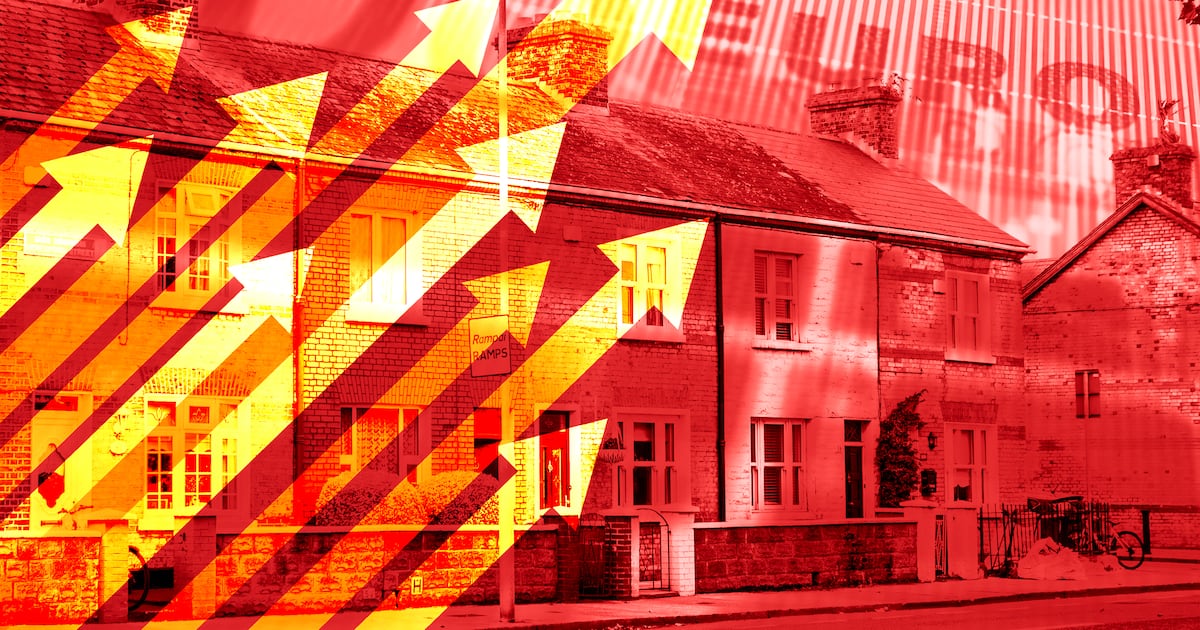Irish home prices are expected to rise by a further 5 per cent over the next 12 months, amid ongoing supply shortages, according to a survey of estate agent members of the Society of Chartered Surveyors Ireland (SCSI).
However, 60 per cent of those polled see prices levelling off soon, with a further 18 per cent saying that they have already peaked – after a dozen years of continuous growth.
Irish residential property prices have soared almost 165 per cent from their post-crisis lows in 2013, the SCSI noted, citing Central Statistics Office (CSO) data. Affordability has worsened over the period, with many dual-income households now facing “steep deficits when attempting to buy a home”, the report said.
“Over the past five years, more than half of agents have consistently highlighted low stock levels, stressing that constrained supply remains a fundamental issue impacting the market,” said SCSI president Gerard O’Toole.
The Government, formed in January with a strong mandate to tackle the State’s housing crisis, is widely expected to fall well short of its target for 41,000 homes to be completed this year as it eyes 300,000 new homes by 2030.
The Central Bank of Ireland said earlier this month that it was “surprised” by the lack of progress and that it now estimates only 32,500 units to be delivered in 2025. Some 30,330 homes were built in 2024.
Mr O’Toole called on the Government to make the new housing activation office, aimed at addressing barriers to the delivery of vital public infrastructure projects needed to enable greater housing development, fully operational “as soon as possible”.
 How will the updated National Development Plan shape Ireland in years to come?
How will the updated National Development Plan shape Ireland in years to come?
A dearth of second-hand homes on the market has also driven prices. Sales instructions have also reduced in the past 12 months, according to the SCSI survey. “The overall activity levels suggest low vendor demand to list properties, which may reflect broader market uncertainties and challenges such as the lack of available stock to move to,” noted the report.
The pace of small landlords putting properties up for sale and exiting the market also appears to have eased. Buy-to-let investors accounted for 29 per cent of sales instructions in the first half of the year, down from 40 per cent for the same period in 2024, according to the report.
Irish home prices rose at an annual rate of 7.9 per cent in May, led by properties outside of Dublin, according to the latest figures from the CSO. The surge has also been fuelled by falling interest rates.
The European Central Bank (ECB) cut its rates for the eighth time in a year last month, leaving its key deposit rate at 2 per cent, half of where it stood in early June 2024 amid a battle against inflation.
While the ECB kept rates on hold at a meeting last year, most economists expect it to reduce borrowing costs again later this year, even if US president Donald Trump’s rapidly evolving tariff policies are complicating decision-making across monetary authorities globally.
“Eighty-eight per cent of agents believe property prices are expensive or very expensive, the highest figure we’ve recorded. We have had 12 years of continuous price growth and the level of increases we have seen in recent years is just not sustainable,” said Mr O’Toole. “In the medium to long term, the only way to ensure prices stabilise is to ramp up supply.”
Still, the report also highlights what it called some “encouraging developments”. “There is growing demand for energy-efficient homes, underpinned by buyer awareness, green mortgage incentives, and a shift in investment priorities,” it said.

